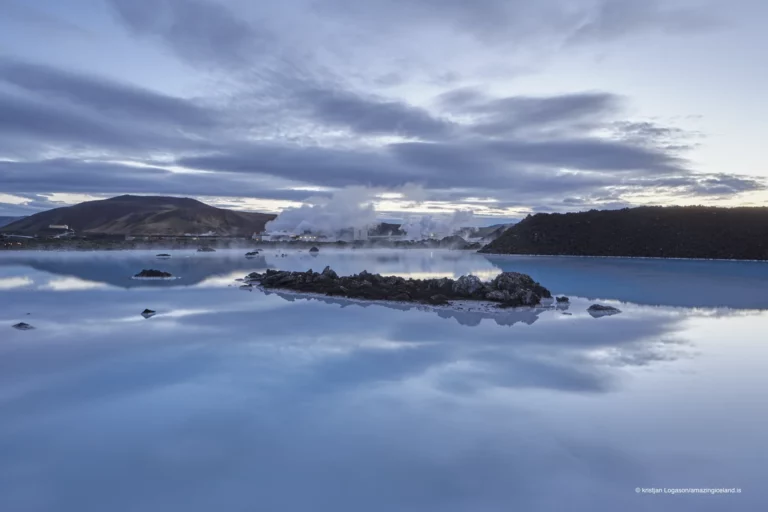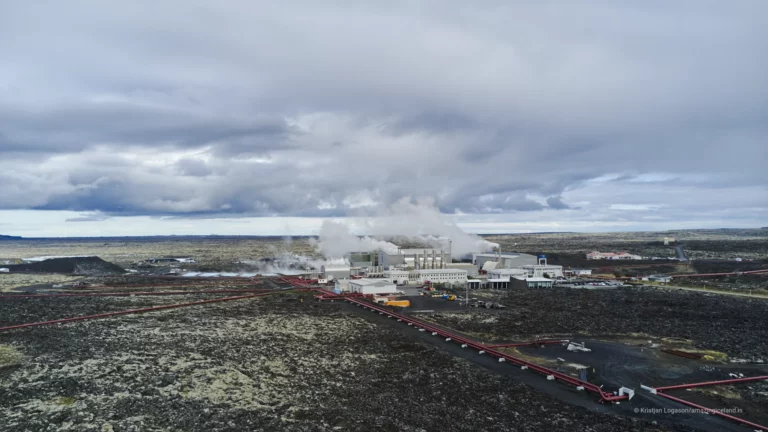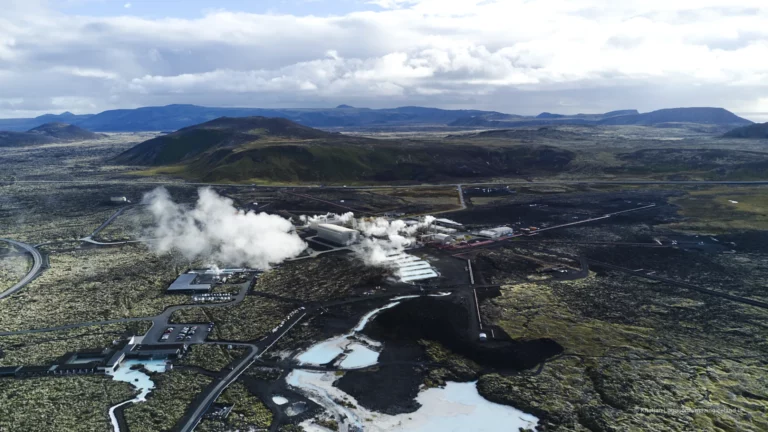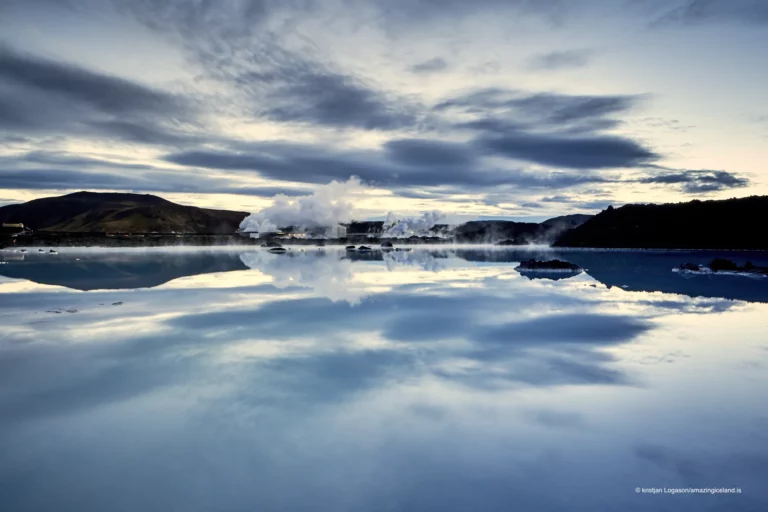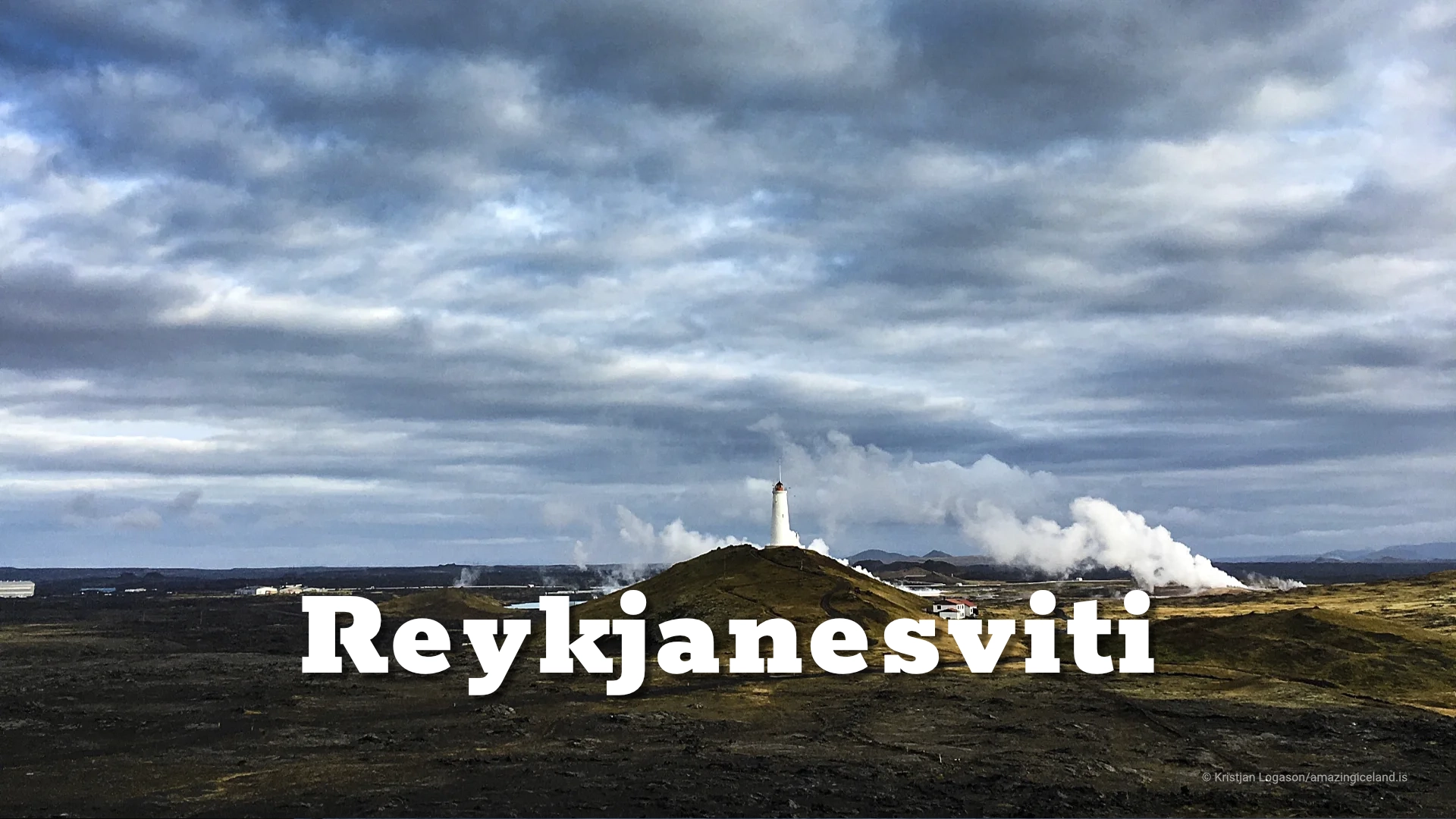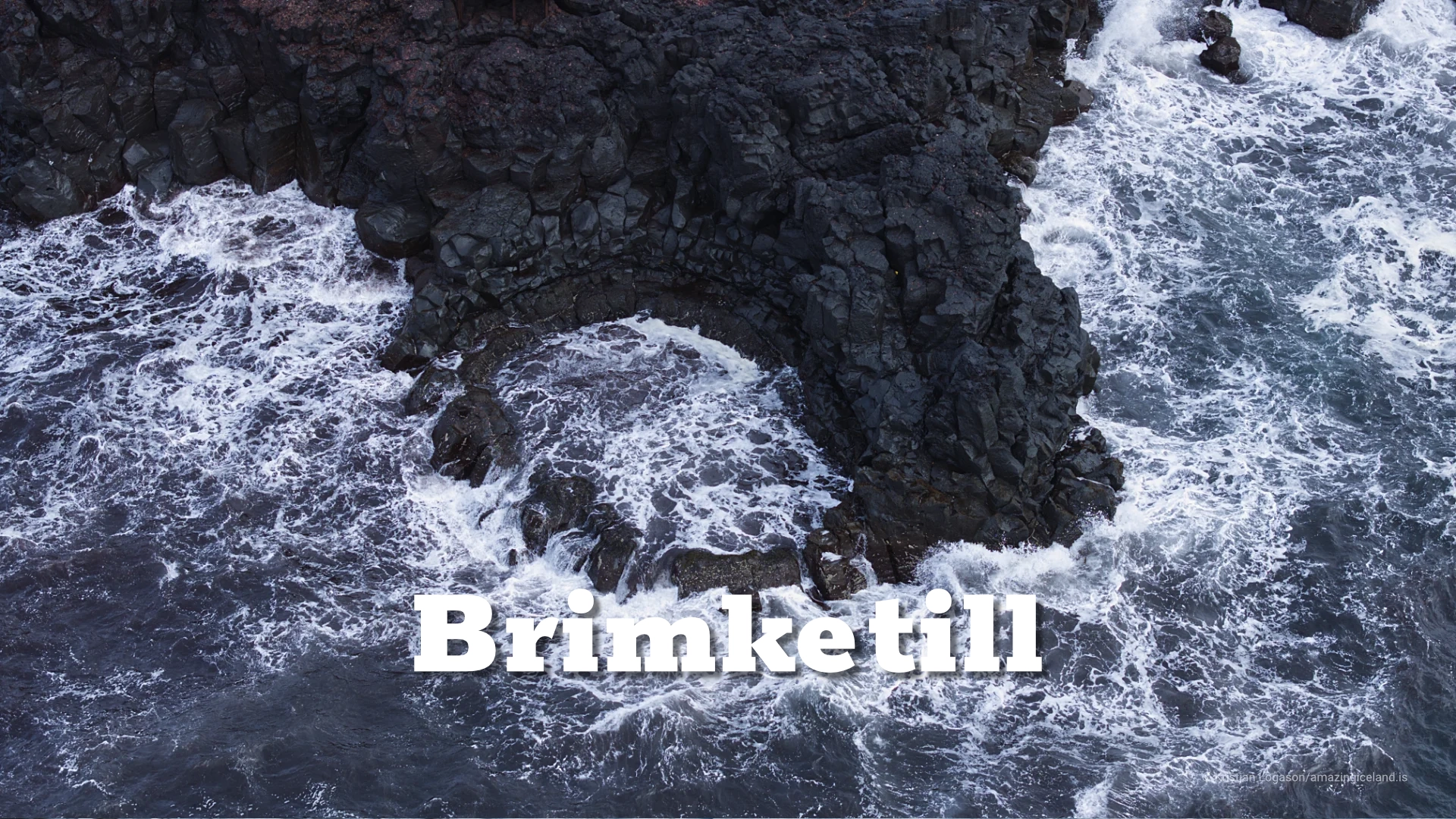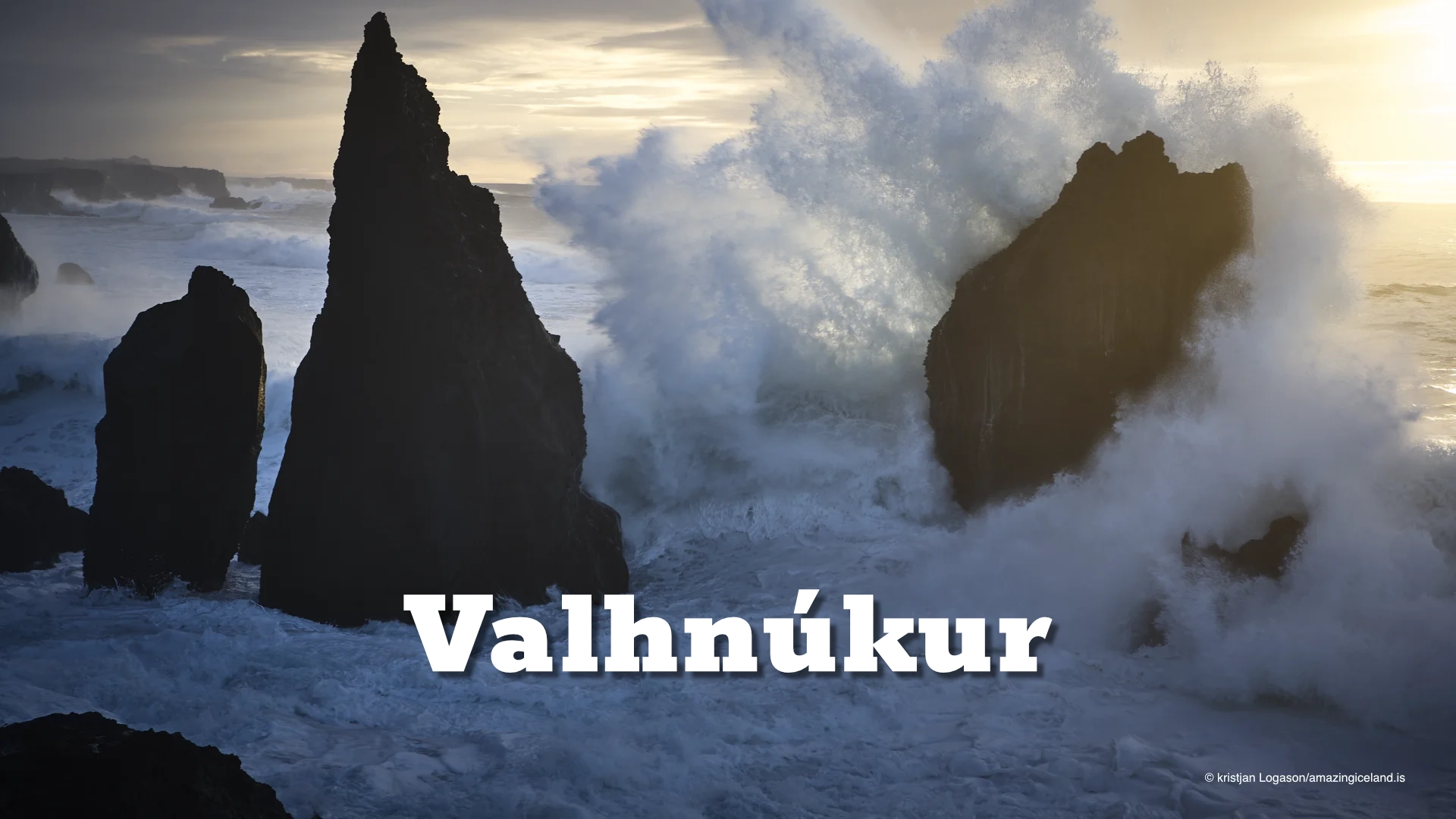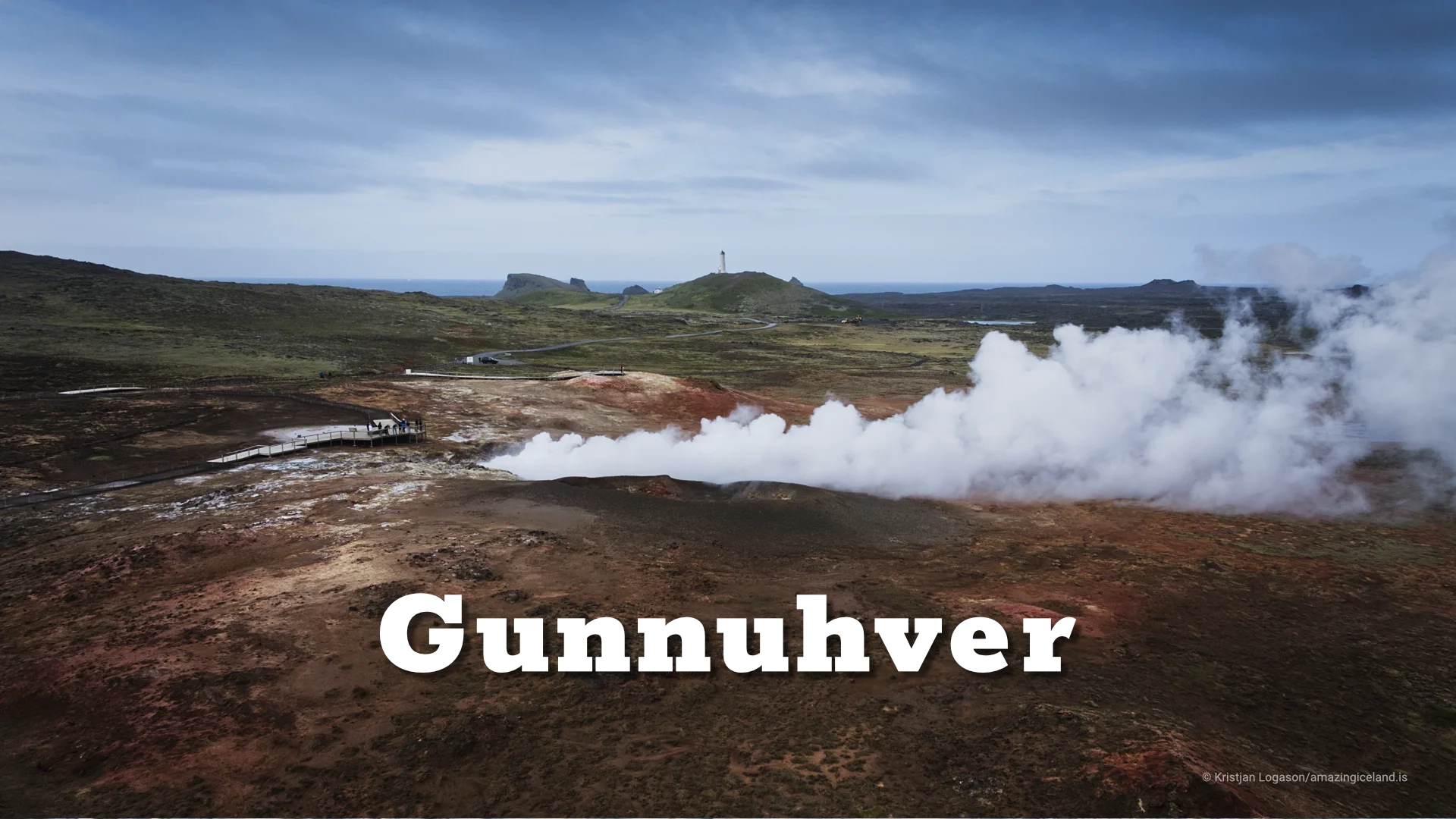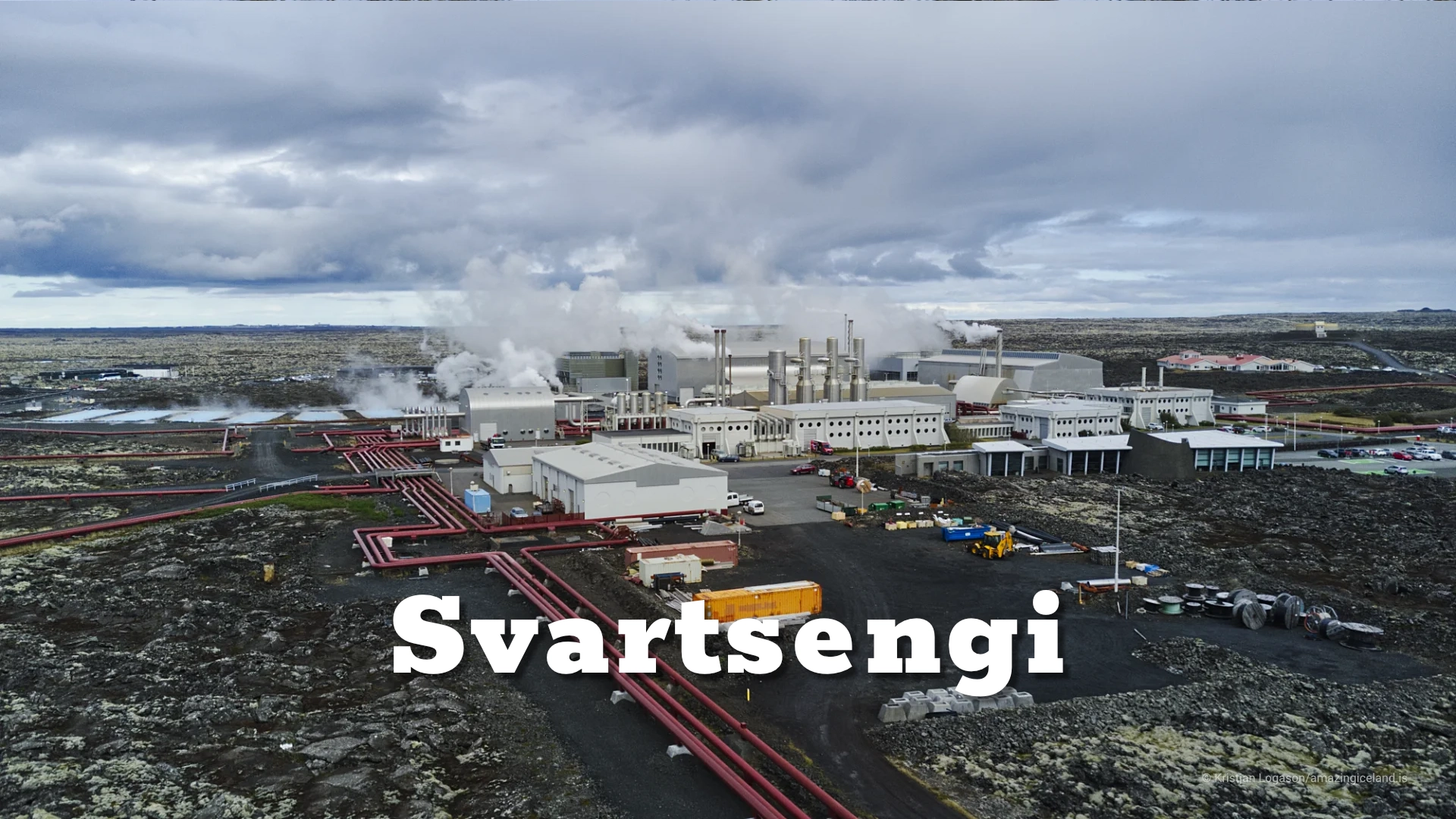
Svartsengi consists of 13 production boreholes connected to six plants, eight of those wells are producing a mixture of steam and brine and the other five are shallow dry steam wells.
The location of Svartsengi geothermal power plant in Reykjanes
Latitude
N63° 53' 9.642"
Longitude
22° 24' 55.410
Svartsengi geothermal power plant in Reykjanes
Iceland’s uniquely active geology has led to natural conditions especially suitable for harnessing geothermal energy. The Svartsengi Power Station is a geothermal power plant, which is located in the Svartsengi geothermal field, about four km north of Grindavík. Svartsengi commenced electricity production in 1976 using geothermal energy. It was Iceland’s first power plant to join together electricity production and energy production for the heating of houses.
Svartsengi power plant was built in six stages, the largest of which, Plant 5, began operating in 1999 with a 30 MW turbine as well as a thermal power installation producing hot water at a rate of 240 l/sec. In December 2007, the sixth stage, Plant 6, began operating. This is only for electricity production and the installed capacity is 33 MW. In 2015, hot water production at Svartsengi was increased to meet increasing demand. Today, Svartsengi consists of 13 production boreholes connected to the six plants, eight of those wells are producing a mixture of steam and brine and the other five are shallow dry steam wells.
Icelanders have long used geothermal energy for direct applications, such as heating homes and baths.The more recent, widespread adoption of geothermal energy as an energy source in Iceland was spawned by a need to stabilize energy prices and increase energy independence, allowing Iceland to increase reliance on geothermal energy for direct applications alongside electricity generation and contributing significantly to diminishing Iceland’s carbon footprint.
Interesting facts:
The geothermal brine effluent, rich in minerals and silica algae, is led to the Blue Lagoon, a well-known bathing and healing resort
The Locomotive Elite
What do Donald Trump and Iceland’s Locomotive Elite have in common?
Far more than you think.
In The Locomotive Elite, you’ll uncover how a tiny clique in Iceland captured extensive control—of banks, courts, media, and even the central bank.
For decades they ruled, first democratically, then through corruption and in the end through crime, enriching themselves and their cronies while dismantling oversight.
The result?
One of the most spectacular financial collapses in modern history.
